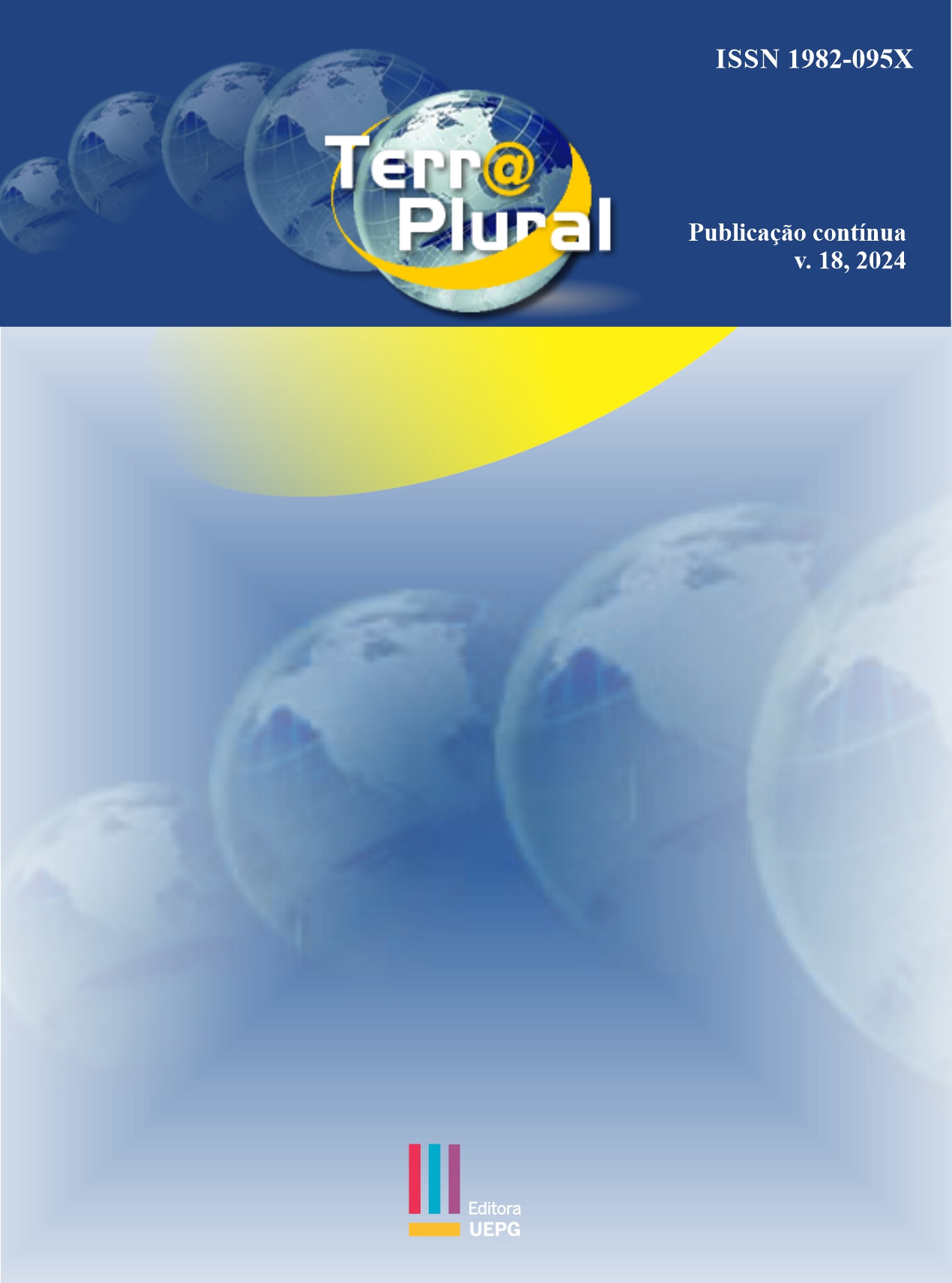Análise da dinâmica temporal da cobertura vegetal na microrregião de Umarizal (2000 a 2022), semiárido do Rio Grande do Norte, Brasil
DOI:
https://doi.org/10.5212/TerraPlural.v.18.2423142.015Palavras-chave:
Vegetação de Caatinga, SAVI, uso e ocupação da terraResumo
A Caatinga, bioma exclusivamente brasileiro que recobre vários estados do Nordeste do país, vem atravessando muitas mudanças ambientais, especialmente no que se refere à sua cobertura vegetal e ao uso e ocupação da terra, o que suscita amplas discussões. Este trabalho visa levantar o uso e ocupação e analisar a dinâmica temporal e espacial da cobertura vegetal na microrregião de Umarizal, através de sensoriamento remoto empregando imagens Landsat 5, 8 e 9, no período seco e chuvoso dos anos de 2000, 2007, 2014, 2017 e 2022. Para a análise da vegetação utilizou-se o índice SAVI. Foi utilizado o software de código aberto QGIS v. 3.28.3 “Firenze” com emprego do Supervised Classification Plugin (SCP) para a elaboração dos mapas de cobertura vegetal. Para o estudo dos tipos de uso e ocupação do solo, os dados foram obtidos do site MapBiomas coleção 7.1. Foram observados valores de SAVI mais elevados no período chuvoso, no entanto o ano de 2017 se destacou pela baixa atividade fotossintética em todo o ano devido aos baixos níveis de precipitação apresentados em toda a microrregião. Os principais tipos de uso dizem respeito à formação arbórea-arbustiva de floresta decidual, seguido por agropecuária, principalmente na forma de culturas temporárias.
Downloads
Downloads
Publicado
Como Citar
Edição
Seção
Licença
Copyright (c) 2024 Islânia dos Santos Nunes, Alfredo Marcelo Grigio, Marco Antônio Diodato

Este trabalho está licenciado sob uma licença Creative Commons Attribution-NonCommercial-NoDerivatives 4.0 International License.
Os autores mantêm os direitos autorais e concedem à revista o direito de primeira publicação, que permite o compartilhamento do trabalho com reconhecimento da sua autoria e publicação inicial nesta revista. Os autores autorizam a distribuição para indexadores e repositórios institucionais, com reconhecimento da sua autoria e publicação inicial nesta revista. Autores são estimulados a distribuir a versão on line do artigo (por exemplo, em repositórios institucionais ou em sua página pessoal), considerando que isso pode gerar alterações produtivas, bem como aumentar o impacto e as citações do artigo publicado.

Este obra está licenciado com uma Licença Creative Commons Atribuição 4.0 Internacional.















